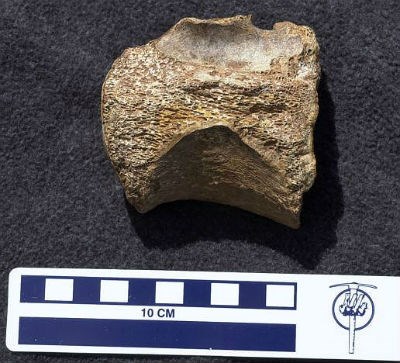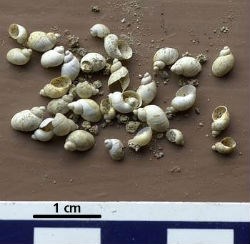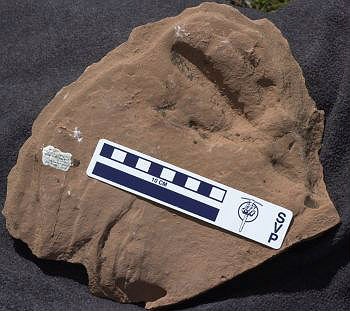
NPS photo / Jenny McGuire 
NPS photo / Jenny McGuire Evidence of terrestrial life has also been uncovered, showing us that modern, diverse life roamed this land over the last 200,000 years. The oldest of these lake sediments contained a rodent skull and bison vertebra (top photo) that date to approximately 220,000 years ago.

NPS photo / Jenny McGuire And in lakebed deposits from 1,600 years ago, a Rocky Mountain bighorn sheep forelimb bone has been uncovered—a different subspecies of bighorn than that found in the park today.
|
Last updated: July 6, 2015
